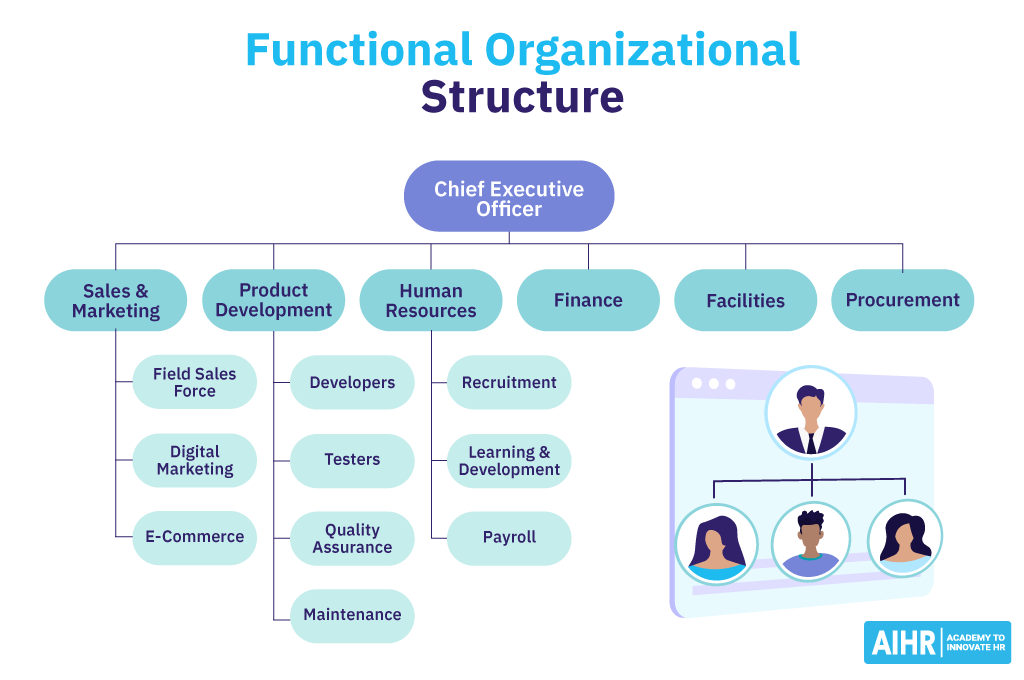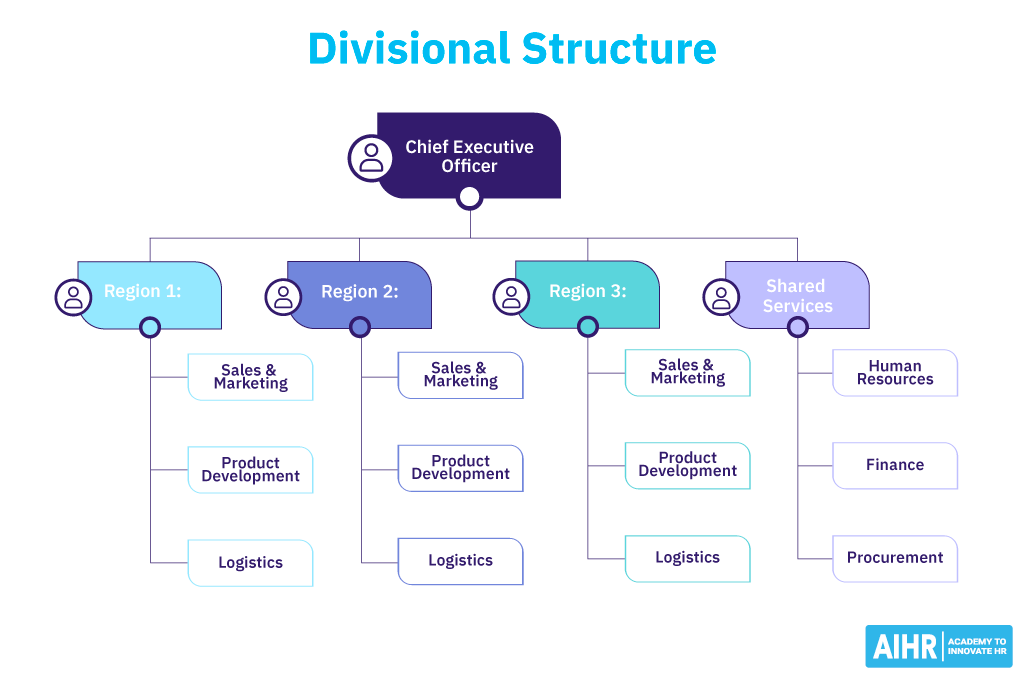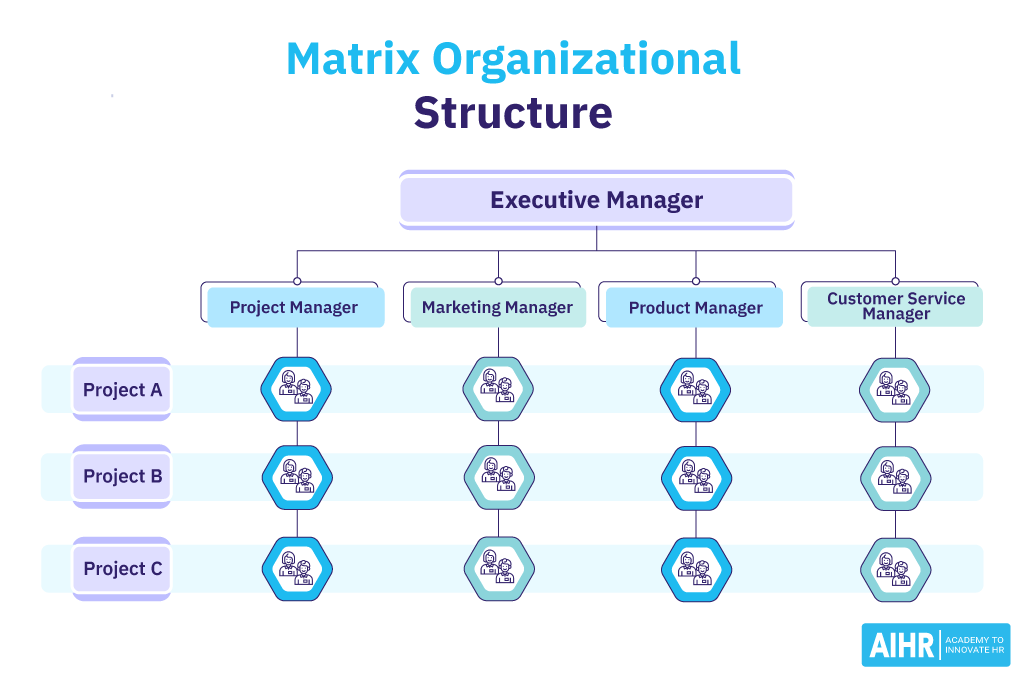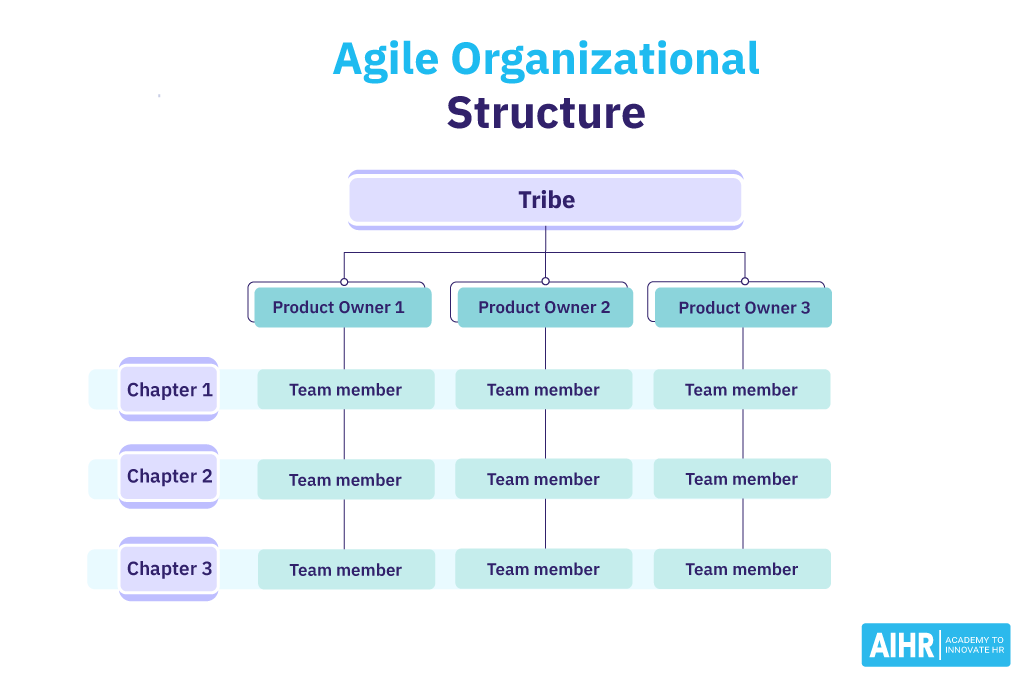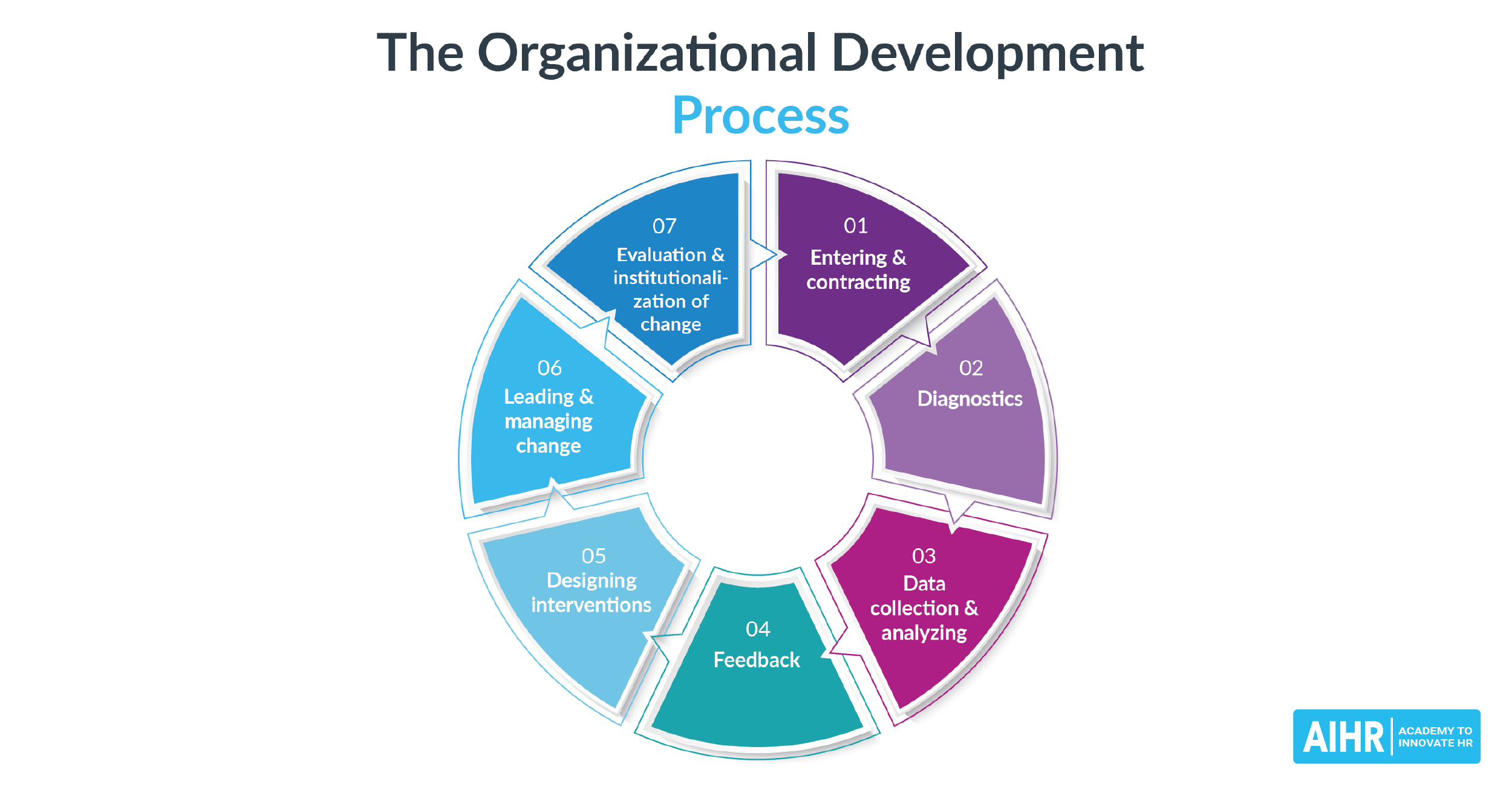Horizontal Organizational Structure
What is a horizontal organizational structure?
A horizontal organizational structure, also known as a flat organizational structure, is a type of business structure with few or no middle management levels between staff and executives. Its simplified management structure typically includes a business owner and one level of managers or leaders, far less than vertical or matrix structures. A horizontal structure gives employees more autonomy, increased responsibility, and decision-making authority.
Some leading examples of a horizontal organizational structure include:
- Netflix
- Hubspot
- Valve.
Characteristics of a horizontal organizational structure
Here are some common characteristics of a horizontal organizational structure:
- Horizontal structures have fewer management levels, with responsibilities and decision-making shared among teams and employees
- Emphasis is placed on collaboration and teamwork, with employees encouraged to work across various functions and departments
- The focus is on skills, expertise, and performance, with roles based on competencies rather than hierarchical positions
- Communication is more direct and open, fostering a transparent environment that encourages the sharing of ideas and innovation
- The decision-making process is streamlined, leading to faster and more efficient approvals and allowing the organization to respond quickly to changes and opportunities.
Horizontal organizational structure vs. vertical structure
| Horizontal structure | Vertical structure | |
| Hierarchy | Minimal hierarchy, usually only one management layer | Clear and established management hierarchy, often multiple layers |
| Communication | Free-flowing and direct | Slower, sometimes miscommunication between management and employees |
| Decision-making | Employees/teams can often make key decisions without prior management approval | Often made at the top or management level |
| Collaboration | Greatly encouraged, more frequent and informal, especially cross-functional collaboration | Less frequent, often planned collaborative efforts in meetings or workshops |
| Suitability | Most suitable for startups, creative industries, project-based teams | Best for large organizations and highly regulated fields such as health care, financial institutions, and government agencies |
Horizontal organizational structure advantages and disadvantages
The advantages
- Employee autonomy and engagement: Employees in a horizontal organization often have more independence and are empowered to make decisions. This often results in increased job satisfaction and motivation, as employees feel more involved and valued.
- Reduced costs: With fewer managers, the organization can reduce costs associated with higher salaries and benefits that are typical at management levels.
- Organizational agility: Horizontal organizational structures tend to be more flexible and adaptable compared to traditional hierarchical structures. This flexibility allows organizations to respond to market shifts or change strategies quickly.
- Enhanced creativity & innovation: When employees have more autonomy and freedom, it can drive innovation and creative ideas. This is especially true when diverse, cross-functional teams come together.
The disadvantages
- Lack of clarity & focus: Without clear hierarchies, employees may be uncertain about decision-making authority and their own responsibilities, leading to potential conflicts or inefficiencies.
- Limited leadership opportunities: With fewer opportunities for management positions, top talent who desire top leadership roles may not be attracted or want to stay for long in horizontal structures.
- Risk of overload: Employees might feel overwhelmed by the increased responsibilities and decision-making demands, potentially leading to burnout.
- Increased HR workload: Because there are fewer managers, HR teams in horizontal structures may need to take on additional responsibilities like conflict resolution, performance management, and coaching.
Horizontal organizational structure example
Green Innovate Inc. is a company specializing in developing innovative renewable energy technologies. It prides itself on its collaborative and non-hierarchical work environment.
Its horizontal organizational structure looks like this:
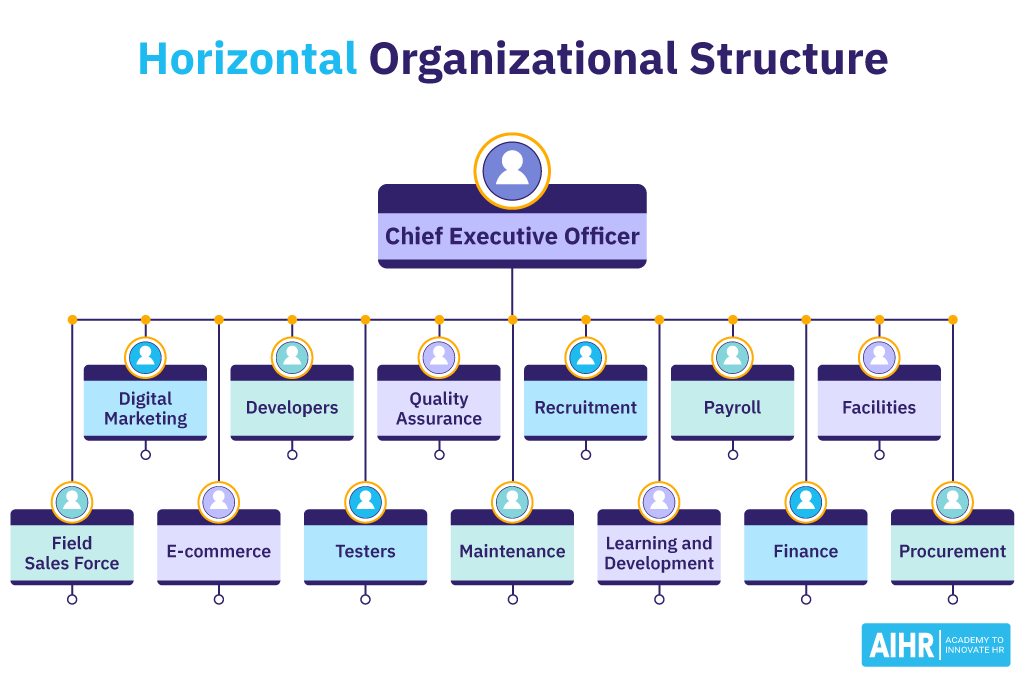
4 other types of organizational structures
1. Functional organizational structure
A functional organizational structure is a form of business organization that is made up of several departments based on specific skills and areas of expertise.
- Benefits: High level of expertise in specific areas by grouping employees based on their function; Clear reporting lines
- Limitations: Slow response times due to centralized decision making; Limited view of organizational goals due to departments being focused on their own objectives.
Companies that use this structure: Amazon, Apple
2. Divisional or regional structure
In a divisional structure, an organization is divided into semi-autonomous units, each responsible for a product, service, or geographic area. This structure is common in large corporations with diverse product lines or different markets.
- Benefits: Strong focus on localization of requirements to market; Allows for more flexibility in execution and faster decentralized decision-making.
- Limitations: Can result in duplication; Difficult to drive standardization.
Companies with a divisional structure: Samsung, Nestlé
3. Matrix structure
A matrix structure combines elements of functional organizational structure with elements of divisional structure. Employees report to two bosses: one for their functional area (like marketing or finance) and one for their product or project.
- Benefits: Drives cross-disciplinary collaboration; Shares expertise across the organization and if managed well drives innovation.
- Limitations: Often internally focused and requires clear governance to work; Internal tensions in terms of conflicting priorities and accountability.
Companies that use this structure: Nike, Phillips
4. Team-based or agile structure
This structure organizes the business into project teams. These teams often function autonomously, working towards specific goals.
- Benefits: Leverages cross-functional capacity; More flexible in allocating resources.
- Limitations: Decision-making and allocation of resources is not always clear; Can result in fragmented work practices and lack of consistency.
Companies that use this structure: Spotify, Airbnb




